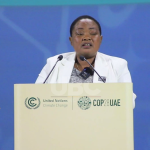The Uganda National Meteorology Authority (UNMA) is gearing up to unveil the country’s weather forecast for the upcoming March to May rainfall season next week.
This forecast holds significant importance for Ugandans as it will provide crucial information regarding the timing of the rainy season, particularly vital for agricultural planning and preparation.
Moreover, the forecast is poised to serve as a guiding tool for various sectors of the government, including ministries overseeing works, health, water, and environment, enabling them to make informed decisions and take proactive measures in anticipation of the rainy season’s onset.
Dr. Alex Ogwang, the Executive Director of UNMA, disclosed this information during the release of the Regional Weather Forecast for the months of March to May by the IGAD Climate Prediction and Application Center (ICPAC) at Speke Resort Munyonyo.
According to the forecast, the region is anticipated to experience increased rainfall compared to previous seasons, presenting both opportunities and challenges for different communities.
While the surplus rainfall can potentially boost agricultural productivity and aid in water harvesting for livestock, it may also bring about adverse effects such as an upsurge in diseases like malaria, Yellow Fever, and cholera, as well as incidences of flooding and landslides, particularly in vulnerable areas.
Husein Seid, a climate modelling expert at ICPAC, highlighted the possible repercussions of the anticipated heavy rainfall, emphasizing the need for preparedness and coordinated efforts to mitigate its adverse impacts.
Dr. Guleid Artan, the Director of ICPAC, underscored the higher probability of increased rainfall across the region, encompassing countries such as Kenya, Somalia, Ethiopia, South Sudan, Uganda, Burundi, Rwanda, and northwestern Tanzania.
Specifically, central and western regions of Kenya are expected to receive more rainfall, extending to border areas of Ethiopia, Kenya, and Uganda.
The onset of the rainy season is forecasted to occur early in certain regions, including parts of northern Tanzania, eastern Rwanda, southern and western Uganda, western Kenya, southwestern Somalia, and central Ethiopia.
Given the persistence of rainfall during the previous October to December seasons, there is a heightened risk of flooding in flood-prone areas, necessitating urgent and coordinated actions for preparedness and mitigation efforts.
Dr. Artan emphasized the importance of leveraging climate information for enhancing resilience and fostering sustainable development across the region, urging stakeholders to prioritize proactive measures based on the forthcoming weather forecast.



















